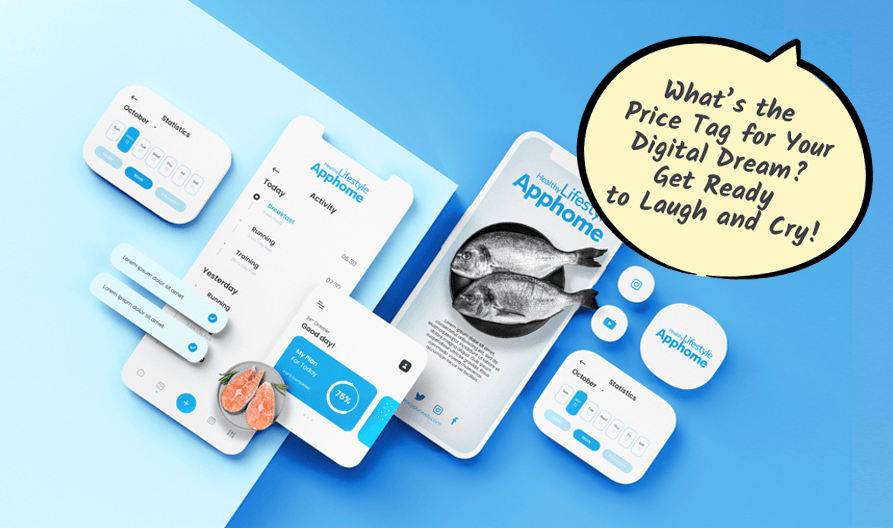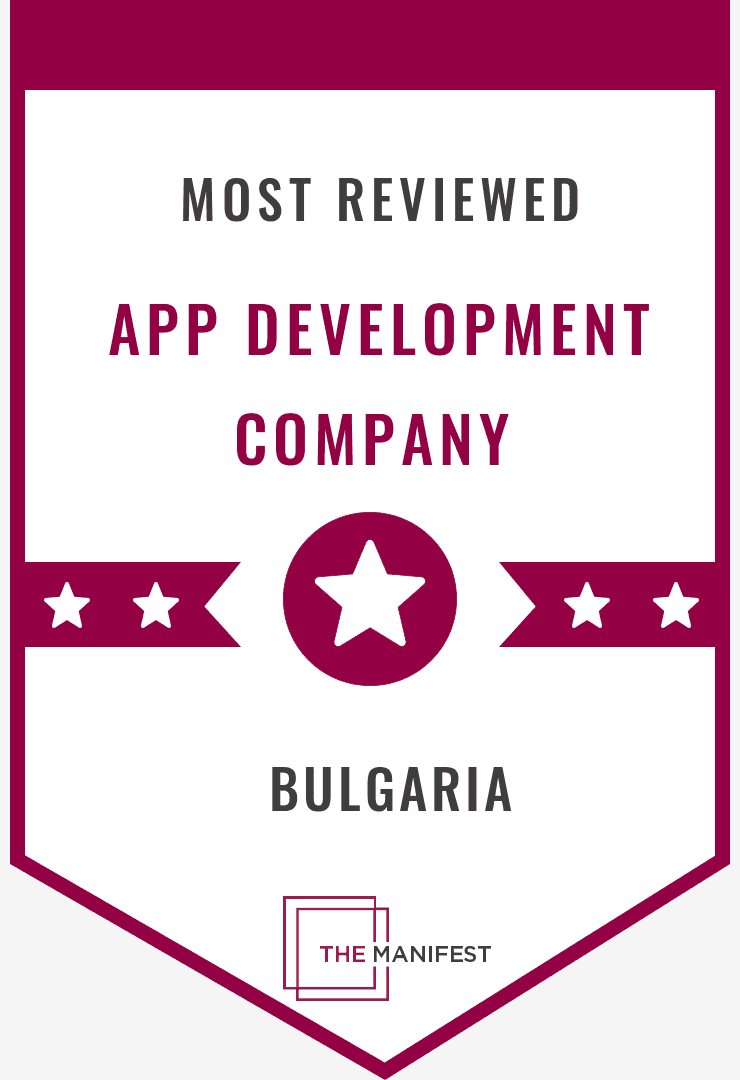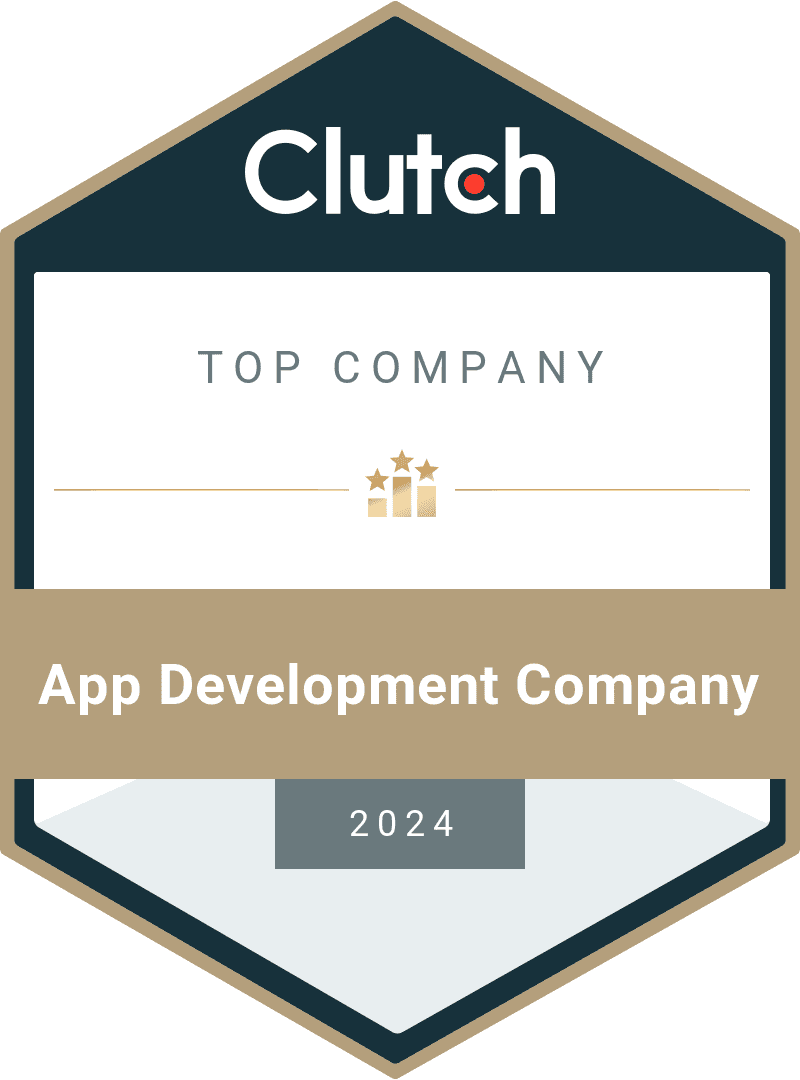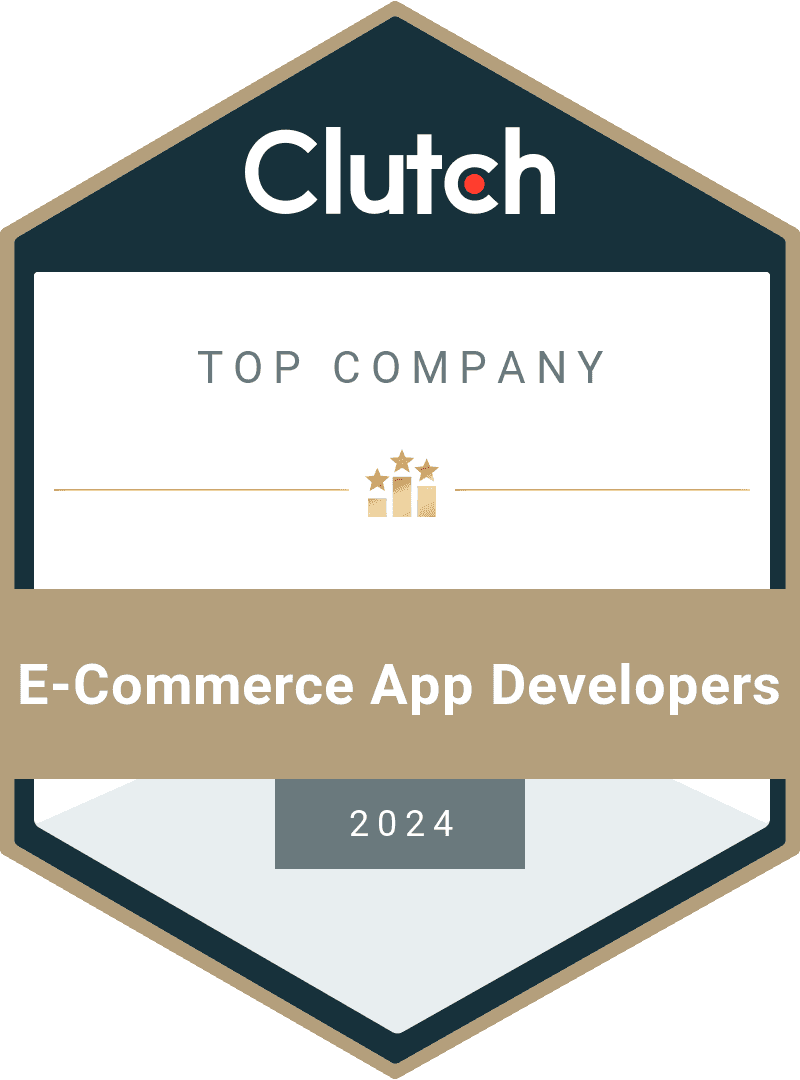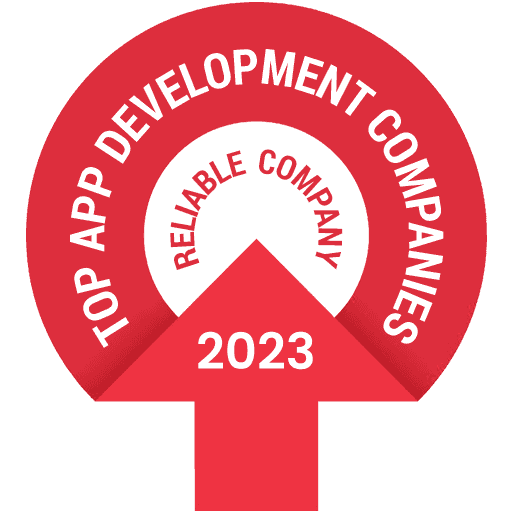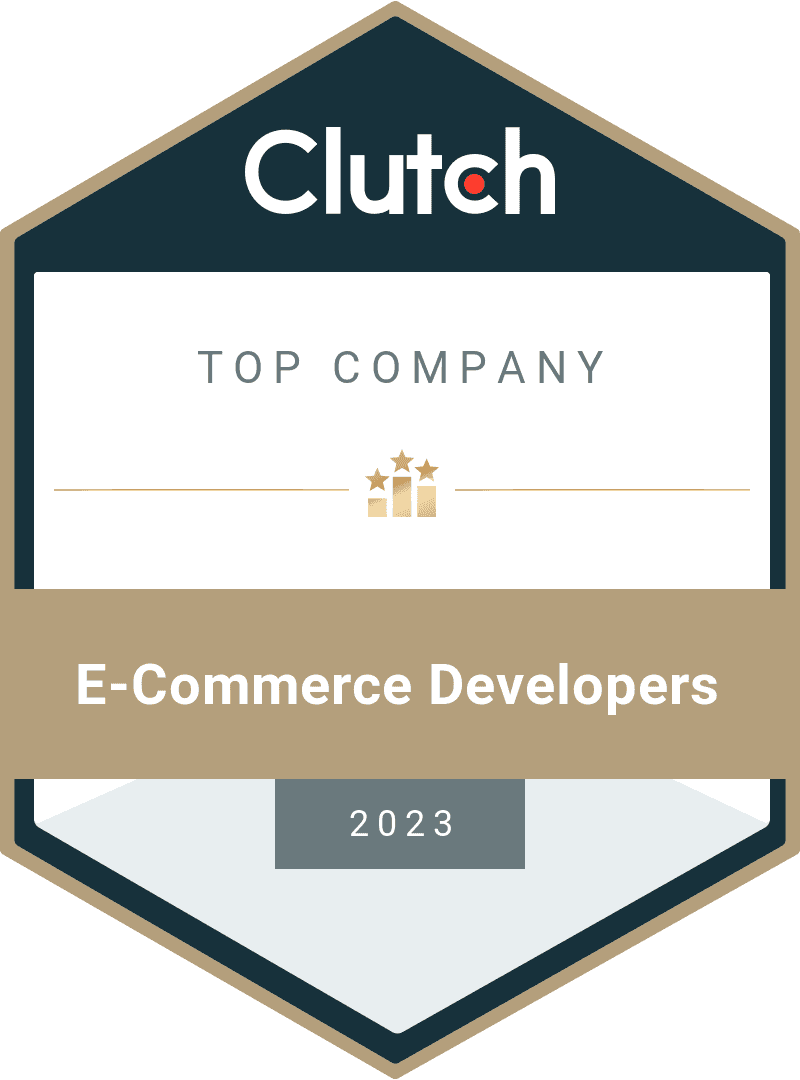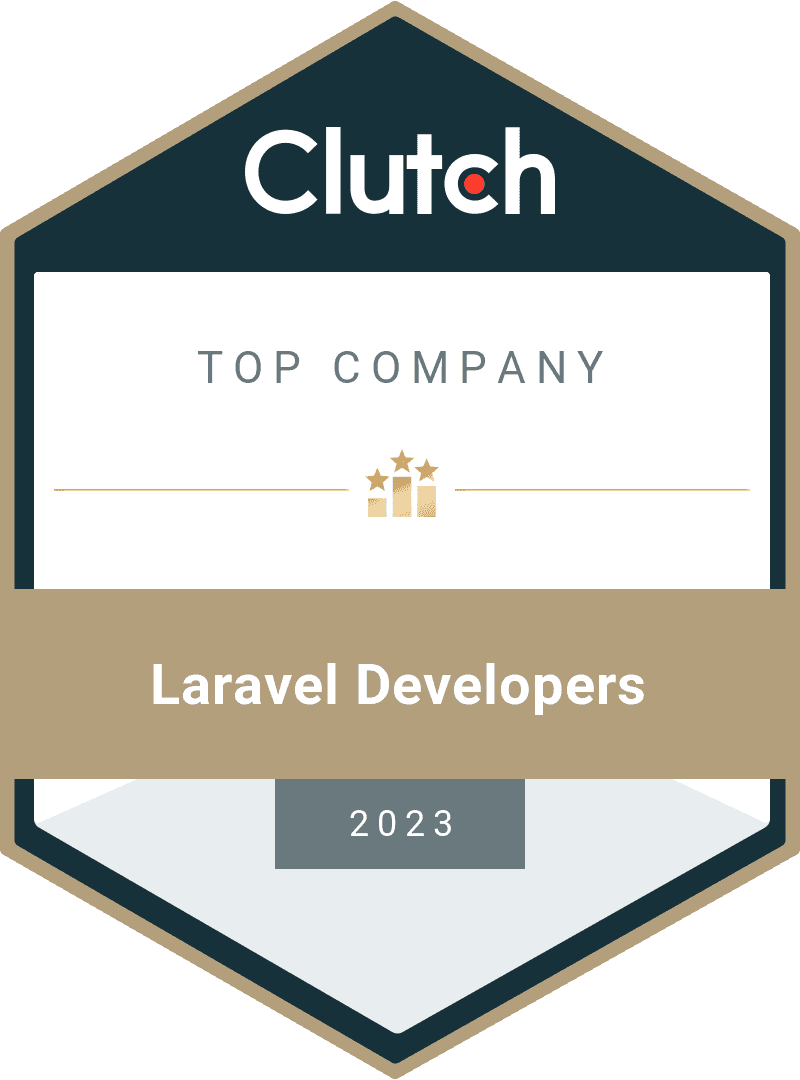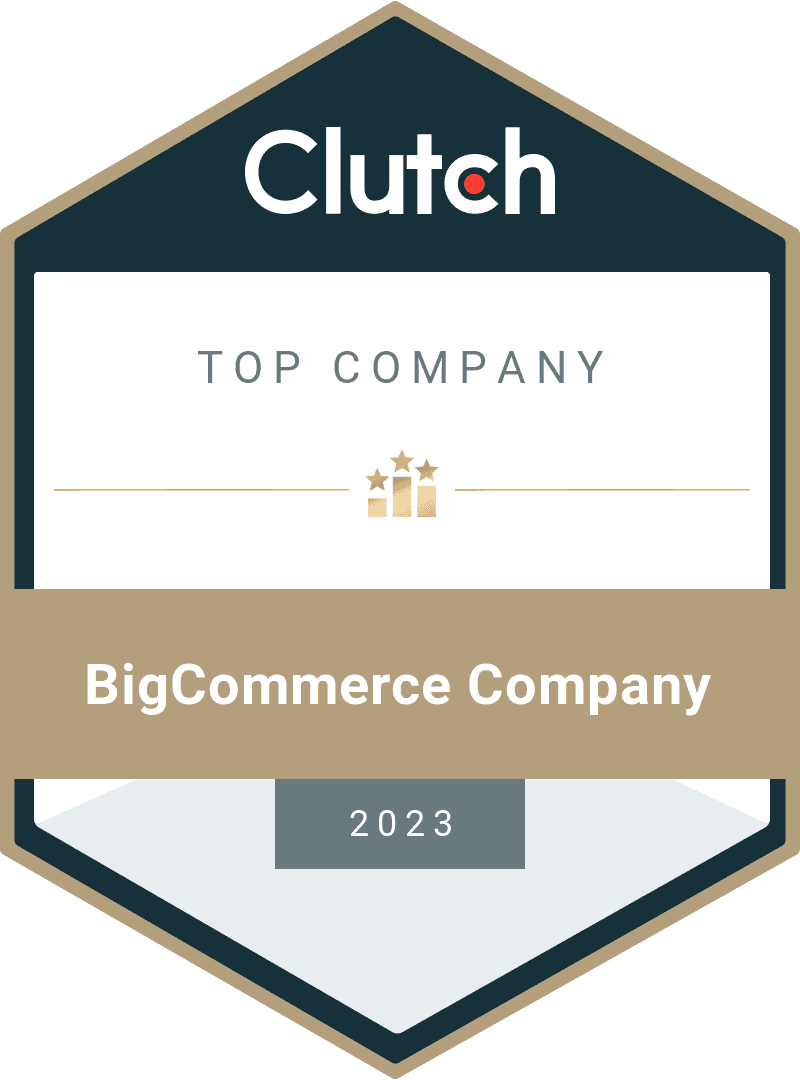In today's digital age, having a mobile app for your business has become crucial for staying competitive and engaging with your customers.
However, one of the common questions that arise when considering app development is, "How much does it cost to create an app for my business?"
The cost of app development can vary significantly based on several factors, including the complexity of the app, the platform(s) it will be developed for, and the features and functionalities you require.
In this article, we will delve into the topic of app development costs and provide you with insights to help you understand the factors that influence pricing, based on our own experience.
We'll explore the various components involved in app development, such as design, development, testing, and deployment, and how each contributes to the overall cost.
Why Сreate an App for Your Business
With the ever-increasing use of smartphones and mobile devices, apps have become an integral part of our daily lives. From ordering food to booking a ride, we rely on apps to fulfill our needs conveniently and efficiently.
But why should you create an app for your business? What benefits does it offer?
Based on our experience we want to share the compelling reasons why developing a mobile app can be a game-changer for your business.
Enhance Customer Engagement: A mobile app provides a direct and personalized channel to engage with your customers. It allows you to deliver tailored content, offers, and promotions, increasing customer loyalty and satisfaction.
With push notifications, you can keep your customers informed about new products, services, or exclusive deals, ensuring they stay connected with your brand.
Improve Brand Visibility: Having your app on customers' devices creates constant brand visibility. It serves as a constant reminder of your business, even when users are not actively engaging with it.
A well-designed and visually appealing app reinforces your brand identity and helps you stand out from competitors.
Increase Customer Convenience: Mobile apps offer unparalleled convenience to customers. They can easily browse products, place orders, make payments, and access information anytime, anywhere.
By streamlining the purchasing process, you remove barriers and make it effortless for customers to interact with your business.
Build Customer Loyalty: A mobile app allows you to foster long-term customer relationships. With features like loyalty programs, personalized recommendations, and in-app rewards, you can incentivize customers to engage with your app regularly.
By providing a seamless and rewarding experience, you can create a loyal customer base that keeps coming back to your business.
Gain Competitive Advantage: In today's competitive landscape, businesses are constantly seeking ways to differentiate themselves. By creating a mobile app, you can stay ahead of the curve and offer a unique experience to your customers.
A well-designed and feature-rich app can give you a competitive edge, attracting new customers and retaining existing ones.
Access Analytics and Insights: Mobile apps provide valuable data and insights about customer behavior, preferences, and interactions.
By analyzing this data, you can gain a deeper understanding of your target audience, refine your marketing strategies, and make data-driven decisions to improve your business operations.

How Much Will App For Your Business Cost on Average?
While it's challenging to provide exact average prices as cost of developing an app can vary significantly based on numerous factors, including project complexity, features, team location, and development time, here are some general price ranges, based on our research, to give you a rough idea:
- Basic web app: $5,000 to $20,000
- Medium-sized web app: $20,000 to $50,000
- Complex web app: $50,000 to $100,000+
Native App:
a) Android App:
- Simple Android app: $10,000 to $30,000
- Medium-sized Android app: $30,000 to $70,000
- Complex Android app: $70,000 to $150,000+
b) iOS App:
- Simple iOS app: $10,000 to $40,000
- Medium-sized iOS app: $40,000 to $80,000
- Complex iOS app: $80,000 to $150,000+
- Basic hybrid app: $10,000 to $30,000
- Medium-sized hybrid app: $30,000 to $70,000
- Complex hybrid app: $70,000 to $150,000+
- Simple cross-platform app: $15,000 to $40,000
- Medium-sized cross-platform app: $40,000 to $80,000
- Complex cross-platform app: $80,000 to $150,000+
These price ranges are indicative and can vary depending on factors such as app functionality, design complexity, third-party integrations, and backend requirements.
It's essential to consult with experienced app development company like Uran to get accurate cost estimates based on your specific project requirements.
Remember that investing in quality app development can lead to better user experiences and long-term business success.
Business App Development Budget Cost Breakdown by Stages
Cost of Business Analysis in App Development Budget
When it comes to developing a successful mobile application for your business, the initial stage of business analysis plays a crucial role.
This stage involves market research and ideation, where careful planning and analysis set the foundation for the entire development process.
Understanding the cost associated with this stage is essential to effectively budget your app development project.
In this blog post, we will delve into the cost considerations of the development stage and provide insights into how our company handles this crucial phase with expertise.
Market Research:
Market research is an integral part of the business analysis stage. It involves gathering data, analyzing market trends, and identifying the target audience's preferences.
The cost of market research can vary depending on the depth and breadth of the analysis required.
Factors such as the scope of research, the use of external market research agencies, and the complexity of data collection methodologies can impact the cost.
Ideation and Conceptualization:
During this phase, our expert team works closely with you to brainstorm ideas, define the app's concept, and outline its features and functionalities.
The cost associated with ideation and conceptualization depends on the complexity of the app idea, the level of detail required, and the number of iterations needed to finalize the concept.
Our experienced professionals collaborate with you to transform your vision into a viable app concept.
Cost Breakdown:
To help you understand the cost distribution, here is a breakdown of the typical expenses involved in the development stage:
Market Research: The cost varies based on the depth of research, data collection methods, and analysis techniques.
Ideation and Conceptualization: The cost is influenced by the complexity of the app idea, the number of features, and the level of detail required in the planning phase.
The cost of the development stage, which encompasses market research and ideation, is a significant component of the app development budget.
By understanding the cost breakdown and allocating resources effectively, you can ensure a well-planned and successful app development journey.
At our company, we bring our expertise in business analysis to the table, providing comprehensive solutions tailored to your specific requirements.
Contact us to discuss your app development project and learn more about how we can handle the development stage efficiently within your budget.
Cost of Project Management in App Development Budget
Project management plays a crucial role in app development by overseeing the entire process, coordinating tasks, managing resources, and ensuring that the project stays on track.
It involves activities such as project planning, risk management, communication, and quality control.
By having a skilled project manager at the helm, you can streamline workflows, mitigate risks, and maintain effective collaboration among team members.
Factors Influencing Project Management Costs:
Project Complexity: The complexity of your app project directly impacts project management costs.
More complex projects often require additional project management resources to handle intricate workflows, coordination with multiple teams, and extensive documentation.
Team Size and Composition: The size and composition of your app development team also influence project management costs.
Larger teams with diverse roles and responsibilities may require more project management efforts to ensure effective coordination, communication, and task allocation.
Project Duration: The duration of the project affects project management costs. Longer projects generally require ongoing project management involvement, including continuous monitoring, reporting, and stakeholder communication.
Communication and Collaboration Tools: The cost of project management can also be influenced by the tools and software used for communication and collaboration.
Advanced project management tools and platforms may come with additional costs, but they can significantly enhance team efficiency and project transparency.

Cost of Design in App Development Budget
In the process of app development, the design stage plays a pivotal role in bringing your app idea to life and creating an engaging user experience.
From conceptualizing the visual elements to crafting interactive prototypes, this phase sets the foundation for the entire development process.
In this blog post, we will explore the cost of design in the app development budget, highlighting the significance of this stage and sharing insights from our company's experience in delivering similar projects.
Design is not just about aesthetics; it's about creating a seamless and intuitive user interface that aligns with your brand identity and resonates with your target audience.
The design stage encompasses various aspects, including user experience (UX) design, user interface (UI) design, and prototyping.
This phase focuses on defining the app's layout, navigation, color scheme, typography, and overall visual appeal.
Factors Influencing Design Costs:
Complexity of the App: The complexity of your app idea, including the number of features, screens, and interactions, directly impacts the design costs. More intricate apps often require additional design resources and time to ensure a polished and user-friendly interface.
Customization Requirements: If you have specific design requirements or a unique brand identity, customization efforts may increase the overall design costs.
Tailoring the app's design elements to match your brand and user preferences involves extra design work and attention to detail.
User Experience Research: Conducting user research and usability testing can enhance the user experience of your app.
This research involves gathering insights, analyzing user behavior, and refining the design based on user feedback. While it adds value to the final product, it can also contribute to the overall design costs.
Iterative Design Process: The iterative nature of the design process, which involves creating multiple design drafts and incorporating feedback, can influence the design costs. Each iteration requires time and effort from the design team, leading to additional expenses.
Our Experience and Design Processes:
At Uran Company, we understand the importance of design in app development, and we have successfully executed numerous projects that showcase our expertise in this field.
Our design process typically involves the following steps:
- Discovery and Research: We collaborate closely with our clients to understand their vision, target audience, and business objectives. This phase helps us gather insights and align our design approach with their goals.
- Wireframing and Prototyping: We create wireframes and interactive prototypes that outline the app's structure, layout, and navigation. This enables our clients to visualize the user flow and make informed decisions about the app's functionality and design.
- User Interface Design: Our skilled designers craft visually appealing interfaces, incorporating the brand's identity, color schemes, and typography. We focus on creating intuitive and user-friendly interfaces that enhance the overall user experience.
- Iterative Refinement: We value client feedback and iterate on the design based on their inputs. This collaborative approach ensures that the final design meets their expectations and aligns with their brand image.
The cost of design in the app development budget is a crucial investment in creating an engaging and visually appealing user experience. Factors such as app complexity, customization requirements, user research, and iterative design processes influence the overall design costs.
By partnering with a company experienced in app design, you can benefit from a comprehensive design process that brings your ideas to life and creates a compelling app interface.
Prioritizing design ensures that your app stands out from the competition and delivers a seamless experience to your users.
Cost of App Development (Coding) in App Development Budget
The coding stage is the heart of app development, where your app idea transforms into a fully functional and interactive application.
This phase involves writing the code that brings together the app's features, functionality, and user interface.
In this blog post, we will explore the cost of app development (coding) in the app development budget and shed light on the factors that influence the overall expenses.
We will also discuss our expertise in coding and how we ensure a seamless development process for our clients.
Factors Affecting App Development Costs:
App Complexity: The complexity of your app idea is a significant determinant of development costs.
Apps with basic functionalities and a limited number of screens tend to be less expensive to develop compared to complex applications with intricate features, integrations, and advanced interactions.
The more complex the app, the more time and resources are required for coding, leading to higher costs.
Platform(s) Targeted: Developing an app for a single platform, such as iOS or Android, is typically less expensive than building for both platforms simultaneously.
Each platform has its own coding requirements, frameworks, and development tools, which can impact the overall development costs.
App Architecture: The chosen app architecture can influence the development costs.
A well-structured and scalable architecture, such as Model-View-Controller (MVC) or Model-View-ViewModel (MVVM), requires careful planning and implementation, which can add to the development expenses.
However, investing in a robust architecture can lead to long-term cost savings by facilitating future updates and maintenance.
Integrations and APIs: If your app requires integration with external systems, such as payment gateways, social media platforms, or third-party APIs, the complexity and cost of development may increase.
Integrating external services often requires additional coding and testing to ensure seamless communication and data exchange.
UI/UX Design Implementation: Translating the design elements into code involves attention to detail and adherence to the user interface (UI) and user experience (UX) guidelines.
Implementing complex animations, transitions, and custom UI elements can impact the coding efforts and costs.

Our Expertise and Coding Processes:
At Uran Company, we have extensive experience in app development and follow a systematic approach to ensure smooth and efficient coding processes.
Here's an overview of our coding process:
- Programming Languages and Frameworks: We leverage programming languages and frameworks tailored to the specific requirements of the app. For native app development, we utilize Swift or Objective-C for iOS and Java or Kotlin for Android. For cross-platform development, we use frameworks like React Native or Flutter.
- Development Environment Setup: We create a robust development environment using industry-standard tools and software. This includes integrated development environments (IDEs), version control systems, and testing frameworks to streamline the coding process and ensure code quality.
- Agile Development Methodology: We adopt an agile development approach, breaking down the app's features into smaller tasks or user stories. This allows for iterative development, frequent feedback, and early detection of issues, leading to a more efficient and cost-effective coding process.
- Quality Assurance and Testing: We conduct rigorous testing at each stage of development to identify and rectify any issues or bugs. This ensures that the final product meets the desired quality standards and performs seamlessly across various devices and platforms.
The cost of app development (coding) in the app development budget depends on several factors, including app complexity, targeted platforms, app architecture, integrations, and UI/UX design implementation.
By partnering with a reputable development company, you can benefit from their expertise in coding, efficient development processes, and adherence to coding best practices.
Type of Apps
When embarking on an app development project, it's crucial to consider the type of app you want to create.
Different types of apps, such as native, web, hybrid, and cross-platform, come with their own set of features, benefits, and cost implications.
In this blog post, we will explore the various types of apps and delve into how they can affect the overall cost of your project.
By understanding these differences, you can make informed decisions about the app type that aligns with your goals and budget.
Native Apps:
Native apps are built specifically for a particular platform, such as iOS or Android, using the respective programming languages and development tools.
They offer the advantage of leveraging the platform's native capabilities, resulting in high performance and seamless integration with device features.
However, developing native apps for multiple platforms increases the development time and cost, as separate codebases are required.
Web Apps:
Web apps are accessed through web browsers and are not installed on the user's device.
They are built using web technologies like HTML, CSS, and JavaScript and can be accessed across different platforms and devices. For more insights on JS check our article: What Is JavaScript Used for in Web Development Services? .
Web apps generally have lower development costs compared to native apps since they don't require platform-specific coding.
However, they may have limitations in terms of performance and access to device features.
Hybrid Apps:
Hybrid apps combine elements of both native and web apps.
They are developed using web technologies but are wrapped in a native container, allowing them to access native device functionalities.
Hybrid apps offer a balance between cross-platform compatibility and native performance. They can be cost-effective as they share a single codebase for multiple platforms, reducing development time and expenses.
However, complex features or extensive customization may require additional development efforts.
Cross-Platform Apps:
Cross-platform apps are developed using frameworks like React Native, Flutter, or Xamarin.
They allow code sharing across multiple platforms, reducing development time and costs. Cross-platform apps offer native-like performance and access to device features.
However, some platform-specific functionalities may require additional coding, impacting the overall cost.
Impact on Project Costs:
The type of app you choose can significantly impact your project's cost. Here are some key factors to consider:
- Development Resources: Native apps typically require separate development teams for each platform, leading to higher resource costs. Web apps and cross-platform apps often require fewer developers, resulting in reduced expenses.
- Design and User Experience: Native apps provide more flexibility in design and user experience customization. Web apps and cross-platform apps may have limitations in achieving platform-specific design elements, which could impact costs if extensive customization is required.
- Maintenance and Updates: Native apps may require separate maintenance and updates for each platform, potentially increasing long-term costs. Web apps and cross-platform apps can have streamlined maintenance processes since updates can be applied to a single codebase.
- Time to Market: Native apps may take longer to develop due to separate codebases. Web apps and cross-platform apps offer faster development times, allowing you to reach the market quickly and potentially reduce costs associated with extended development periods.
Choosing the right type of app for your project is crucial to meet your business objectives while managing costs effectively.
Native apps provide optimal performance and platform-specific features but can be more expensive, especially for multiple platforms.
Web apps and cross-platform apps offer cost efficiencies and broader platform reach but may have limitations in customization and performance.
Hybrid apps strike a balance between cross-platform compatibility and native functionality.
By carefully evaluating your project requirements and considering the pros and cons of each app type, you can make an informed decision that aligns with your budget and objectives.
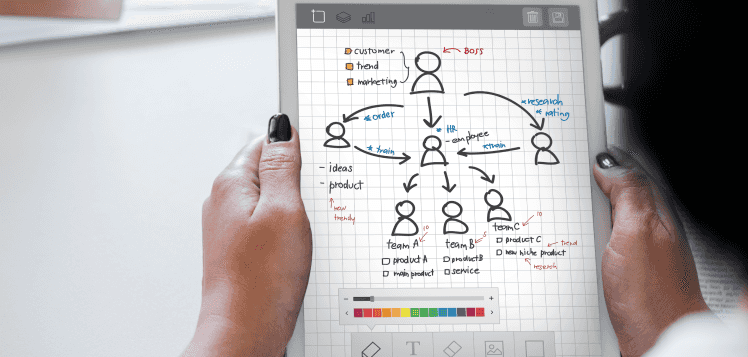
Complexity of features of an App
The complexity of features in an app can have a significant impact on the overall development costs.
Each feature requires additional time, effort, and resources to design, develop, and integrate into the app.
Let's explore how specific features can affect the cost of an app development project:
UI Optimization for Tablets:
Adapting the app's user interface (UI) to provide an optimal experience on tablet devices requires additional design and development work.
This includes creating responsive layouts, optimizing graphics, and ensuring seamless interaction across different screen sizes. The complexity of tablet UI optimization can increase the development costs.
Landscape & Portrait Mode:
Supporting both landscape and portrait modes in the app involves adjusting the UI and handling screen orientation changes.
This requires extra design considerations and development efforts, which can impact the overall cost.
Mobile OS Versions and Device Models Support:
Ensuring compatibility with various mobile operating system versions (e.g., Android and iOS) and device models (e.g., different screen sizes, resolutions, and hardware capabilities) requires extensive testing and compatibility checks.
The broader the support required, the more time and resources needed, potentially increasing the development costs.
Offline Mode:
Implementing an offline mode that allows users to access certain app features and content without an internet connection requires additional development efforts.
This includes data synchronization, offline storage, and handling offline functionality seamlessly.
The complexity of implementing offline mode can impact the development costs.
Push Notifications:
Integrating push notification functionality to send real-time updates and notifications to app users involves setting up a notification infrastructure and ensuring seamless delivery across different platforms.
The complexity of push notification integration can influence the development costs.
User Profile & Social Login:
Implementing user profiles and social login functionality (e.g., login via social media accounts) requires backend development, API integration, and data management.
The complexity of user profile and social login features can affect the development costs.
Localization and Multi-Language Support:
Providing support for multiple languages and localization requires additional content translation, UI adjustments, and backend infrastructure.
The complexity of implementing localization and multi-language support can impact the development costs.
Chat:
Integrating chat functionality into an app involves real-time messaging, user presence, and data synchronization.
The complexity of chat features, such as group chats or multimedia messaging, can increase development costs.
Adding Mobile Ads:
Integrating mobile advertisements, such as banner ads or interstitial ads, requires setting up ad networks, ad placements, and ad tracking mechanisms.
The complexity of ad integration and customization can influence the development costs.
App Analytics and Usage Tracking:
Implementing analytics tools to track user behavior, app usage, and performance metrics involves integrating third-party SDKs, setting up data tracking, and generating reports.
The complexity of analytics and usage tracking features can impact the development costs.
Intelligent Product Feedback:
Incorporating features for user feedback, ratings, and reviews, along with backend management and analysis, requires additional development efforts.
The complexity of intelligent product feedback features can affect the development costs.
Integrating Payments, QR Codes, Navigation, OCR, and More:
Integrating additional features like payment gateways, QR code scanning, advanced navigation, optical character recognition (OCR), or other custom functionalities involves complex development and integration processes.
The complexity and customization required for these features can impact the overall development costs.
The complexity of app features directly affects the development costs.
More complex features often require additional design, development, testing, and integration efforts, which can increase the overall project budget.
When planning an app development project, it's essential to consider the scope and complexity of the desired features to accurately estimate the development costs and allocate resources accordingly.
Cost of App Testing & Deployment in App Development Budget
When it comes to app development, testing and deployment are crucial stages that ensure the quality and successful launch of the application.
These stages involve various activities and considerations that can impact the overall cost of app development.
Let's delve into the cost factors associated with app testing and deployment:
Testing Strategies and Resources:
Implementing comprehensive testing strategies is essential to identify and rectify any issues or bugs within the app.
The cost of testing depends on factors such as the complexity of the app, the number of platforms and devices it needs to be tested on, and the testing methodologies employed.
It is important to allocate resources for manual testing, automated testing tools, and quality assurance personnel, which may increase the overall development budget.
Device Fragmentation and Compatibility:
The cost of testing and deployment can be influenced by the fragmentation of devices and platforms.
The app needs to be tested on different operating systems, versions, and screen sizes to ensure compatibility and a consistent user experience.
The wider the range of devices and platforms to be tested, the more resources and time will be required, potentially increasing the cost.
Security and Performance Testing:
Ensuring the app's security and performance is of paramount importance.
Security testing involves analyzing vulnerabilities, implementing data encryption, and protecting user information.
Performance testing focuses on optimizing app speed, responsiveness, and resource consumption.
These additional testing efforts can impact the overall cost of app development.
App Store Guidelines and Submission:
Submitting an app to various app stores, such as Apple App Store and Google Play Store, involves adhering to specific guidelines and requirements.
This includes app metadata, icons, screenshots, and descriptions.
The cost of app submission can vary depending on the app store fees, review processes, and any additional services required for app listing optimization.
Deployment and Release Management:
The process of deploying the app to production environments and managing its release can incur costs. This includes activities such as configuring servers, setting up cloud infrastructure, and managing version control.
The complexity of deployment and release management, along with any required backend integrations, can impact the overall cost.
Continuous Integration and Delivery:
Implementing a continuous integration and delivery (CI/CD) pipeline allows for seamless updates and releases.
The setup and maintenance of CI/CD tools and automation processes require technical expertise and ongoing management, which may add to the development costs.
Post-Release Monitoring and Support:
After the app is deployed, monitoring its performance, analyzing user feedback, and providing timely support are essential.
This involves monitoring app crashes, tracking user behavior, and addressing any issues that arise.
Allocating resources for post-release monitoring and support is necessary for maintaining the app's functionality and user satisfaction.
It is important to note that the costs associated with app testing and deployment can vary based on the app's complexity, the level of customization required, the target platforms, and the desired quality standards.
Working with experienced app development teams can ensure efficient testing processes, effective deployment, and a smooth launch, ultimately impacting the overall cost in a positive way.

Hidden App Development Costs in App Development Budget
In addition to the obvious expenses, several factors can impact your project's budget.
These hidden costs include developing the backend into the app, patenting the app, allocating a marketing budget, supporting multiple platforms, integrating third-party services, and ongoing maintenance.
By considering these factors upfront, you can avoid surprises and ensure a more accurate estimate of your app development expenses.
Understanding the financial implications of these hidden costs will help you make informed decisions and set realistic budget expectations.
In the following sections, we will explore each area in detail, providing insights to help you navigate them successfully.
Development of Backend into App
Integrating a robust and scalable backend infrastructure adds complexity to the development process.
It involves building servers, databases, APIs, and other components necessary for seamless data storage, retrieval, and synchronization.
The cost of backend development varies based on the app's complexity, scalability requirements, and integration with external systems. It's important to consider factors such as server hosting fees, data storage costs, and ongoing maintenance expenses.
Additionally, the choice of backend technologies can affect costs.
Using a ready-to-use backend as a service (BaaS) solution can save development time and upfront costs but may involve recurring subscription fees.
On the other hand, building a custom backend solution provides more flexibility but requires dedicated development resources and ongoing support.
App Patenting Cost
Protecting your app's intellectual property through patents can be a valuable investment.
However, obtaining patents can involve legal fees, application costs, and ongoing maintenance expenses.
The patenting process includes conducting prior art searches, preparing patent applications, and filing fees.
It's essential to consult with a qualified intellectual property attorney to understand the costs involved and the potential benefits of patenting your app.
Keep in mind that patenting is not always necessary or beneficial for every app.
The decision to pursue patent protection should be based on the uniqueness and potential market value of your app's technology or features.
App Marketing Budget
Developing a remarkable app is only the first step; effectively promoting it to your target audience is equally important.
App marketing efforts encompass various strategies such as app store optimization (ASO), paid advertising, social media campaigns, content creation, and public relations.
Allocating a budget for marketing activities ensures that your app reaches its intended users and drives downloads and engagement.
The marketing budget can vary depending on factors such as the competitiveness of your app's category, target market size, marketing channels, and campaign objectives.
It's essential to conduct market research, identify your target audience, and create a comprehensive marketing plan that aligns with your app's goals.
Multi-platform support
Building an app that runs seamlessly across multiple platforms, such as iOS and Android, requires additional development efforts.
Each platform has its unique design guidelines, programming languages, and features. Ensuring a consistent user experience across platforms often entails extra development time and resources.
The cost of multi-platform support depends on the complexity of the app, the level of platform customization required, and the development approach chosen.
Native app development, where separate codebases are developed for each platform, generally incurs higher costs compared to cross-platform development frameworks like React Native or Flutter, which allow code sharing across platforms.
It's important to consider the trade-offs between development costs, time-to-market, and the desired user experience when deciding on the level of multi-platform support for your app.
Integration of 3rd party services
Integrating third-party services, such as payment gateways, mapping APIs, analytics tools, or social media platforms, can enhance your app's functionality and user experience.
However, these integrations may involve licensing fees, usage-based costs, or subscription charges.
Before integrating third-party services, thoroughly evaluate their pricing models and terms of use.
Consider factors such as the number of API requests, data storage requirements, transaction fees, and any additional costs associated with premium features or support levels.
It's important to balance the benefits of these integrations against the potential costs and ensure they align with your app's value proposition and revenue model.
Maintenance costs
Once your app is launched, ongoing maintenance is essential to ensure its optimal performance, security, and compatibility with evolving platforms and devices.
Regular updates, bug fixes, and feature enhancements require ongoing investment. Maintenance costs should be factored into your budget to provide a seamless user experience and protect your app's longevity.
The specific maintenance costs can vary depending on factors such as the complexity of your app, the frequency of updates, the need for server maintenance, and ongoing technical support.
It's important to allocate resources for ongoing monitoring, bug tracking, security audits, and compliance with platform updates and regulations.
How to calculate mobile app development costs? Consider These Five Factors
When planning to develop a mobile app, one of the crucial aspects that businesses need to consider is the cost involved.
Estimating the budget accurately is essential to ensure a successful development process. While the actual cost can vary depending on several factors, considering the following five key factors can help you calculate mobile app development costs more effectively.
- Complexity and Features: The complexity and features of your app play a significant role in determining the cost. Apps with advanced functionalities, intricate designs, and extensive integrations tend to be more expensive to develop compared to simpler apps.
- Platforms: The choice of platforms also affects the cost. Developing for multiple platforms like iOS and Android will require more resources, time, and investment. It's important to decide whether you want to build a native app for each platform or opt for cross-platform development frameworks.
- Design and User Experience: A well-designed app with a seamless user experience can greatly impact its success. Investing in intuitive UI/UX design and incorporating user-centric features may increase the development cost but can lead to better user engagement and satisfaction.
- Development Team: The expertise and location of the development team can influence the cost. Hiring experienced developers or outsourcing the project to a reputable development agency will come at a higher price but can ensure a high-quality app.
- Maintenance and Updates: The cost of app development doesn't end with the initial release. Ongoing maintenance, updates, and bug fixes should be considered as part of the overall cost. Regular updates are necessary to keep the app compatible with new OS versions and devices.
It's important to note that these factors are just a starting point for estimating the app development costs.
Each project is unique, and additional factors like app marketing, testing, and deployment expenses should also be taken into account.
Conclusion
Understanding the hidden app development costs is essential for accurately forecasting your expenses and engaging in negotiations confidently.
By being aware of the factors that can impact the overall cost of your app project, you can make informed decisions and effectively manage your budget.
Throughout this article, we've explored various aspects of app development that can often be overlooked when budgeting.
We discussed the costs associated with developing a backend infrastructure, app patenting, app marketing, multi-platform support, integration of third-party services, and ongoing maintenance.
By considering these factors, you can create a more comprehensive budget that reflects the true investment required for your app's success.
It's important to note that every app development project is unique, and costs can vary based on specific requirements and circumstances.
While this article provides a valuable overview, it's recommended to consult with our experts for personalized advice and recommendations regarding the app development services we offer.
Our team of professionals can provide guidance, answer your questions, and assist you in making informed decisions.
With this knowledge and support, you can navigate the app development process more confidently, effectively manage your budget, and increase the likelihood of creating a successful and profitable app.
Remember, we are here to help you every step of the way, ensuring that your app development journey is smooth and rewarding.
Relevant Articles:

